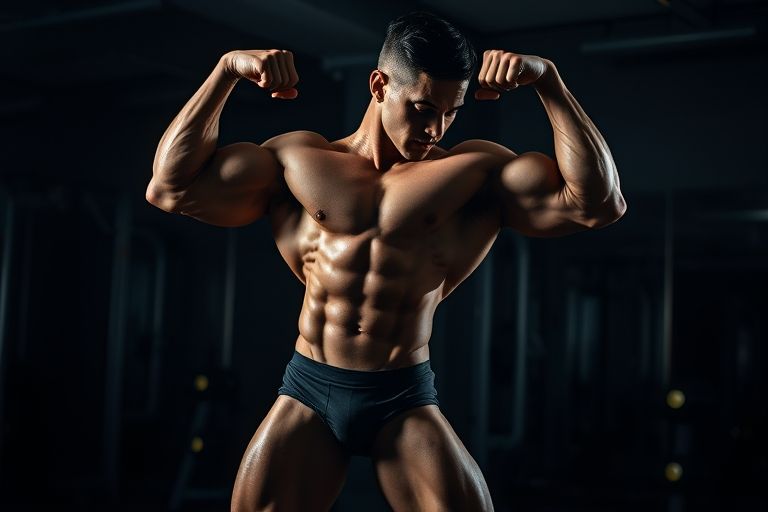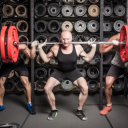

Fitness is a topic that has gained immense popularity in recent years. With the rise of social media influencers and the emphasis on physical appearance, people are increasingly drawn to fitness as a means of achieving their desired body shape. Among the various fitness disciplines, bodybuilding stands out due to its focus on muscle hypertrophy and extreme physique development. However, the question remains: do bodybuilders truly represent true fitness?
Bodybuilders dedicate their lives to sculpting their bodies into massive, symmetrical, and well-defined forms. They undergo intense training regimes, strict diets, and rely on supplements to achieve their desired physique. From a superficial perspective, bodybuilders may seem like the epitome of fitness. After all, their chiseled muscles and low body fat percentages are often the envy of many. But is this aesthetic representation enough to define true fitness?
True fitness encompasses more than just appearance. It involves overall health, strength, endurance, and functional abilities. While bodybuilders excel in muscular development, their training focuses primarily on hypertrophy, neglecting other aspects of fitness. Their routines often prioritize isolation exercises over full-body movements, which may limit their functional strength and mobility.
Additionally, bodybuilders often follow extreme dieting practices to achieve their low body fat percentages and enhance muscle definition. These diets may involve strict calorie restrictions, macronutrient manipulations, and even the use of diuretics. Such practices can have negative consequences on overall health and may not be sustainable in the long run.
Another aspect to consider is cardiovascular fitness. Bodybuilders typically prioritize resistance training over cardiovascular exercise. While they may have impressive muscular strength, their cardiovascular endurance may not be at the same level as athletes who focus on activities such as running, swimming, or cycling.
However, it is essential to acknowledge that bodybuilding has its merits. The discipline and dedication required to achieve and maintain a bodybuilder's physique are commendable. Bodybuilders serve as inspiration for many individuals looking to transform their bodies and adopt a healthier lifestyle. They demonstrate the power of discipline and consistency in achieving goals.
Moreover, bodybuilding can positively impact mental health. Engaging in regular exercise releases endorphins, which can improve mood and reduce stress. Bodybuilders often report increased self-confidence and improved body image as a result of their dedication to the sport.
It is crucial to recognize that true fitness is a multidimensional concept. It encompasses various aspects such as strength, endurance, flexibility, and overall well-being. While bodybuilders excel in certain areas, they may lack in others. Therefore, it is essential to adopt a balanced approach to fitness that includes a variety of exercises and focuses on overall health and functionality.
Furthermore, it is important not to compare oneself to bodybuilders or any other fitness professionals. Each person's fitness journey is unique, and it is essential to set realistic goals that align with individual capabilities and aspirations. Fitness should be a personal endeavor aimed at improving one's own well-being rather than conforming to societal beauty standards.

1. Cardiovascular Exercise: Engaging in activities such as running, swimming, or cycling helps improve cardiovascular endurance and overall fitness levels.

2. Strength Training: Incorporating resistance training exercises that target all major muscle groups helps improve strength, muscle tone, and functional abilities.

3. Flexibility and Mobility: Practicing activities like yoga or Pilates enhances flexibility, joint mobility, and body awareness.

4. Balanced Nutrition: Consuming a well-rounded diet that includes a variety of nutrient-dense foods supports overall health, energy levels, and recovery.
Bodybuilding requires a significant commitment of time and effort. It may not be suitable for individuals with certain health conditions or those who have different fitness goals.
While bodybuilders may not participate in traditional sports, their dedication to training, discipline, and athleticism make them athletes in their own right.
Maintaining a bodybuilder's physique requires ongoing dedication to training and nutrition. However, priorities may shift over time, and individuals may adapt their routines to prioritize overall health and longevity.
In conclusion, bodybuilders represent a specific aspect of fitness, focusing on muscular development and aesthetics. While their dedication and discipline are admirable, true fitness encompasses a more comprehensive approach that includes strength, endurance, flexibility, and overall well-being. It is essential to find a balance that aligns with individual goals and priorities, rather than striving for a specific aesthetic ideal.
So, the next time you admire a bodybuilder's physique, remember that fitness is about much more than what meets the eye. It's about finding joy and fulfillment in the pursuit of a healthier and stronger version of yourself.